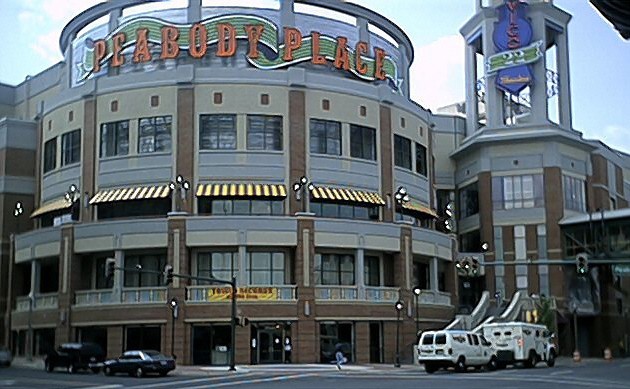In a city like Memphis, with its busy interstates, urban sprawl, and somewhat sketchy public transit, going without a car for 30 days might sound a little crazy.
But that’s exactly what Kyle Wagenschutz, the bike/pedestrian coordinator for the City of Memphis, proposed with the city’s first “30-Day Car-Free Challenge.” During April, participants were to be as car-free as possible — using public transportation, rideshares, bicycles — anything besides driving their own cars alone. Occasional carpooling was allowed.
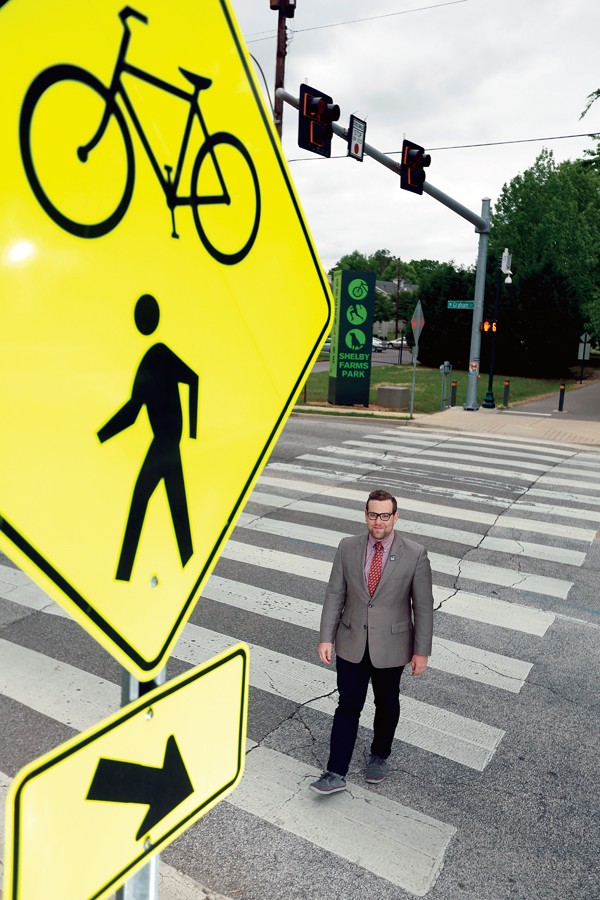 Justin Fox Burks
Justin Fox Burks
Kyle Wagenschutz
Eighteen participants, including the Flyer‘s Bianca Phillips and Alexandra Pusateri, were chosen as the challenge’s “model citizens.” They were asked to write about their experiences on the city’s Car-Free Challenge blog. The challenge was open to anyone, and a number of people signed up and tweeted about their experiences using the hashtag #carfreememphis.
“There’s this idea that it’s impossible to get around by a bicycle in the city or that you can’t use a bus because you’ll never get there,” Wagenschutz says. “We’ve heard a lot of negative stereotypes about how getting around Memphis without a car is not going to happen, that it’s not physically feasible.”
Through the challenge, Wagenschutz hoped to put those stereotypes to rest.
By 2016, the city plans to extend bike lanes by another 130 miles, Wagenschutz says. Since he began his job in 2010, the city has created 71 miles of lanes.
The city now stripes bike lanes as streets are repaved or resurfaced, but that method can create some bike lanes that end abruptly and leave others seemingly unfinished.
“From a network perspective, it can be challenging where you get small segments of new bike lanes or trails that don’t seem to be connected right now,” Wagenschutz says. “Even if you’re building the network a piece at a time, over time, the network will begin to come together.”
The Challenge didn’t come without, well, challenges for participating cyclists. Some reported debris in bike lanes. Another issue was the fact that many Memphis drivers seem unaware of how to share the road with cyclists.
Some Challenge participants who walked for their commutes complained about the state of some sidewalks around the city. But that’ not the city’s fault. Sidewalk maintenance is the responsibility of individual property owners. South Main, as an example, has been redeveloping for years without some sidewalks filled in or improved. Wagenschutz says the city is working with property owners all over Memphis to fix sidewalks.
“It’s not just a South Main problem. It’s a problem all over the city,” he says. “The complication is how the city addresses an issue that is closely linked to property ownership in a way that is fair and equitable.” As for debris, Wagenschutz says cyclists can call the city’s 311 Public Works hotline to report blocked bike lanes or debris.
While the month-long project wasn’t called a challenge for nothing, Wagenschutz believes the benefits of going car-free extend beyond helping the environment, being healthier, and saving money. It also can help change your outlook.
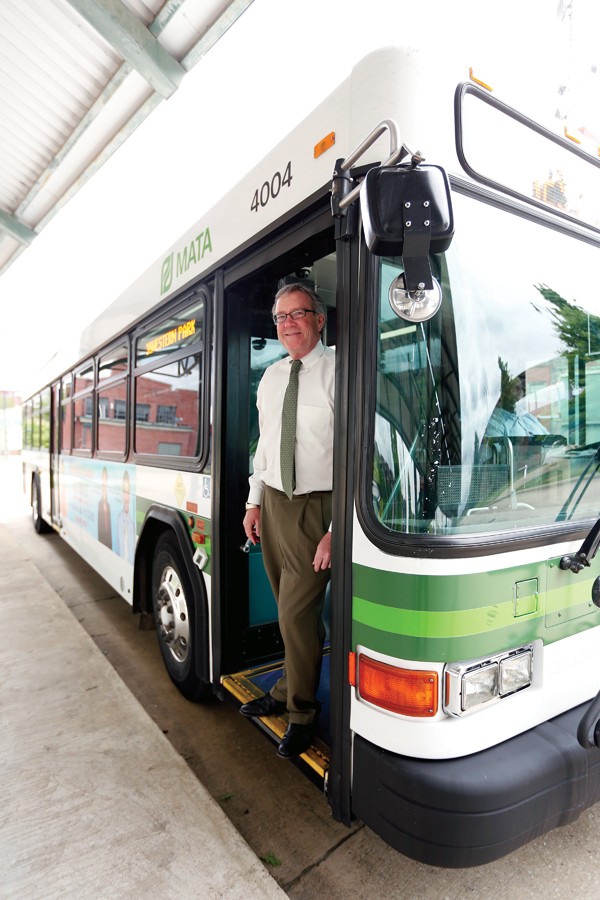 Justin Fox Burks
Justin Fox Burks
MATA’s Interim GM Tom Fox
“In a real way, getting out of your car has a great mental benefit of being in the city, experiencing the city at a different pace,” he says. “It really just provides a great sense of civic pride. One of the most independent things you can do is freeing yourself from driving around in your car every day.”
Tom Fox, interim general manager of MATA, agrees. Fox committed to completing 15 days of the Car-Free Challenge, traveling by bike, trolley, and of course, bus.
“I generally hear from people who have bad experiences on the bus, but I took 16 bus rides in the month, and for the most part, my buses were on time,” Fox says. “If they were late, they weren’t really late to the point where I got messed up on a connection.”
But Fox does recognize that MATA lacks service in certain areas of town, which can cause long-lasting trips and long wait times. He says MATA’s $55 million operating budget, which is subject to cuts from city, state, and federal governments, is too tight to expand service into areas with less residential and employment density.
“We have to concentrate our service on the areas where we get the most bang for our buck. We’re always cognizant of serving lower-income areas, where people don’t have alternatives,” Fox says. “With more money, we could serve the transit-dependent population and have a little bit more to track people who do have a choice in those outlying areas. Park ‘n’ Rides, express services — those are the things we could add if we had more money.”
MATA lacks a dedicated funding stream, meaning there is no money coming from a source dedicated to public transportation, such as a sales tax that would earmark money for MATA. A penny gas tax on the local ballot in 2012 would have provided such a dedicated stream for MATA, but it was voted down.
Cities with higher levels of bus service tend to have dedicated funding streams and more advanced trip-planning technology, such as smart phone apps designed to plan bus routes. MATA has the mobile MATA Traveler website, and Fox says a more user-friendly smart phone app is in the works.
One Flyer staffer who participated in the Challenge had a mostly positive MATA experience with one exception — the dirty bathrooms at MATA’s North End Terminal. Fox says he has “experienced the same thing … I’ve been unhappy with those bathrooms.” But change is coming, he says.
“We have some procurements in process to get some of the fixtures replaced in there, and we have manpower assigned to clean those bathrooms throughout the day,” Fox says.
Fox adds that he’s hopeful that the increased exposure from the Car-Free Challenge will convince more people to leave their cars at home and take a bus.
“The more that we can let people know that [public transit] is not just for low-income people and service is relatively convenient, the better,” he says. “And it’s certainly better for the environment.”
Of Blisters and Bicycles:Bianca’s Story
There I was, speed walking down the Main Street Mall in brand-new ballet flats, blisters already forming on my heels as I hustled to make it into the office for the 9:30 a.m. editorial meeting. It was day one of my 30-Day Car-Free Challenge, and I’d already screwed up.
My plan to take trolleys from Midtown to my downtown office started off okay as I boarded the Madison trolley at 8:45 a.m. But I’d failed to check the schedule for the Riverfront Loop, my planned transfer trolley. It doesn’t start running until 9:30 a.m. — when I was supposed to already have my butt in a chair at our meeting. So I hoofed it from Madison to the Flyer offices on Tennessee Street, despite my lack of proper footwear.
“Whew, this is gonna be a rough month,” I thought to myself.
That was one of a few hiccups throughout April, as I attempted to trade my car for buses, trolleys, and my bicycle for 30 days.
I say “attempted” because there were some days when I simply could not be car-free. My line of work often requires me to attend press conferences, public meetings, and interviews all over town, and when one needs to go from downtown to Germantown to Whitehaven in one day, only a car will do.
But my car-free days didn’t turn out to be as bad as I thought they’d be. My main transit of choice was my trusty mint-green Electra Ladies’ Cruiser. On nice days, I’d wake up an hour earlier than usual, strap on my helmet, and take the North Parkway bike lanes in Crosstown down to the Main Street Mall, then head south toward my office.
The morning rides were quiet and, for the most part, uneventful, except for one day when I took a detour on Manassas. I was biking on the far right side of the wide street when a man in a City of Memphis truck honked his horn and motioned for me to get on the sidewalk.
I didn’t budge, since state law gives bicyclists the right to be on the road. Mr. City Employee is supposed to know he has to share the road and give me three feet between his car and my bike.
But that moment was made up for later that day, when I rode home down the Main Street Mall in the beautiful 75-degree afternoon. People were lounging on patios, sipping cocktails. A tourist couple stopped me to ask directions to Beale Street. People nodded and waved, and my quick ride through the water fountains in front of City Hall made me feel like a kid again. You experience the world through different eyes while riding a bike.
I also rode my first city bus last month. My commute by bus takes about an hour, and I can drive to work in 15 minutes. But time aside, my bus experiences were overwhelmingly pleasant. My buses were always on time (or early), and the bus drivers were extremely patient with my newbie questions. Busing may not be a viable option for me to commute on a regular basis, but I can see myself using buses to travel to art walks, festivals, and bars when I know I’ll be having a few drinks and would rather not have to drive.
My only negative MATA experience? The filthy bathrooms in the North End Terminal. On the first day I rode a bus to work, I needed to make a pit stop while I waited for my transfer bus. But much to my horror, every stall in the ladies’ bathroom was, um, well let’s just say, worse than a porta-potty. Meanwhile, a guy was mopping the floor in the terminal’s lobby. Perhaps those bathrooms should have been a janitorial priority.
But potty talk aside, the Car-Free Challenge was an enlightening and empowering experience. I learned to use the city buses, and I burned thousands of calories on bike rides and walks, even if they were done in uncomfortable shoes.
— Bianca Phillips
[page]
Transportation By Any Other Name: Alexandra’s Story
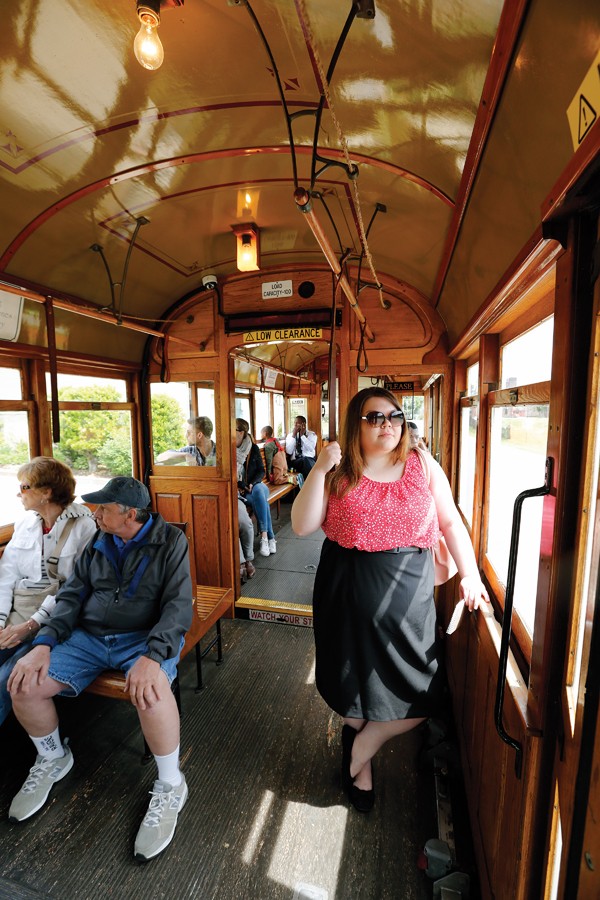 Justin Fox Burks
Justin Fox Burks
Alexandra Pusateri rides a trolley
Using public transportation worried me. The idea of independence that comes with driving a car is ingrained within some of us, and I was definitely one of those people.
I grew up in Raleigh and East Memphis, where you can pull into in a parking lot right in front of a building, take care of your business, and leave.
But since moving downtown, where parking is a commodity, I decided I should start to make the best use of public transportation. And hey, maybe I could save some gas money, right?
The city’s 30-Day Car-Free Challenge was right up my alley. I utilized all methods of transport available to me — trolley, bus, bike, and naturally, my two feet. When the challenge began, my favorite mode quickly became the trolley. I particularly enjoyed riding the Madison line. Unfortunately, an early April trolley fire on the Madison line put an end to that, but the bus line that temporarily replaced the trolley might have been the next best thing.
While riding the bus and trolley, I was able to read, catch up on homework, andappreciate my surroundings more than I would have in a car. When I arrived at my destination, I was usually more relaxed and in better spirits.
Commuting by bicycle was another adventure. I learned very quickly which roads were suitable for a newbie’s travels, and I got an instant lesson in topography. The hilly Martin Luther King Jr. Avenue is not to be messed with for an unprepared cyclist. What would have been a 10-minute drive from home to work turned into an hour-long commute by bike due to my lack of conditioning.
As I got around town on a bicycle, the bike lanes made me feel safer. I didn’t feel like I had to move into the center of a shared lane to prevent a driver from overtaking me. I found most drivers stayed out of the bike lanes, but there was still a stubborn person or two who seemed to think the bike lanes didn’t exist, particularly on Madison Avenue.
By mapping routes ahead of time via Google Maps, I was able to figure out quickly and easily where I needed to go on the MATA routes. Gone are the days of memorizing bus maps — although that wouldn’t hurt.
MATA offers a texting service through which you’re supposed to be able to text a number from a bus stop to a MATA email address and receive arrival times for the next three buses at that stop. But the return texts from MATA took far too long to be helpful.
I needed to catch a bus to a class at the University of Memphis, but MATA didn’t text me back to tell me a bus was due in 30 minutes until an hour later, well after I’d already caught the bus to class.
During the last bit of the challenge, I came down with a cold and was no longer able to commute by bike. Also, as though to taunt me, the weather changed for a few days to a nippy cold in the mornings and evenings, leaving me not wanting to stand outside and wait for a bus.
Thankfully, Lyft, a mobile ride-sharing service, launched in the Memphis market in the nick of time. Lyft bills itself as “your friend with a car,” which is just what I needed.
As soon as Lyft launched in late April, I began using it up to three times a day. Lyft is cheaper than a taxi ride, and the drivers arrived at my apartment within 10 minutes. Every driver I encountered was friendly and helpful and, since all the transactions are done with the mobile app, there’s no exchange of cash.
Despite a few hiccups, the Car-Free Challenge went swimmingly. I learned a lot about my city, and I only hope Memphis continues on its path of innovation and improvement to make it even easier to travel by bus, trolley, or bike.
— Alexandra Pusateri
Dawn Vinson
Downtown Memphis Commission’s Director of Marketing & Events
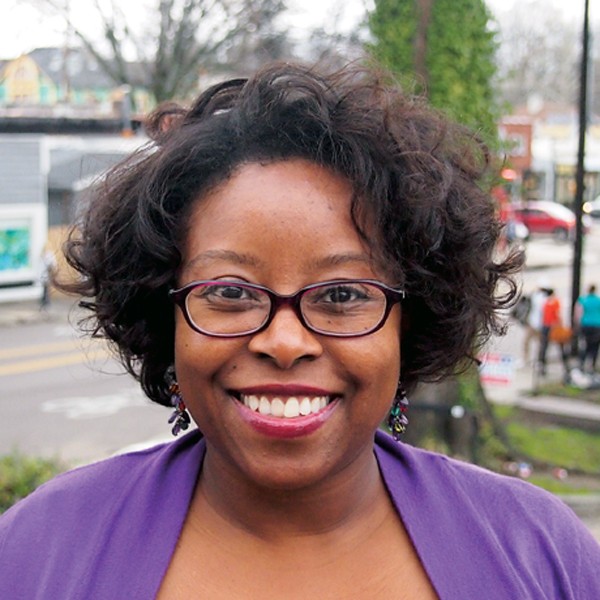 Justin Fox Burks
Justin Fox Burks
Dawn Vinson
Dawn Vinson made it for 30 days without a single car cheat, which she credits to her being “stubborn like that.” But she admits it was no easy feat.
She lives in Hickory Hill, an area with limited bus service, so the nearest bus stop to her home is a three-mile walk or bike ride away.
“Buses don’t run out there. The bus I take, the 36, is always packed, and a few stops after I get on, it becomes standing-room only. Obviously, people need it. I wish it ran more often or we had another choice,” Vinson says.
Vinson would strap her bike on the bus’ bike rack and take it downtown. From her stop, she biked the remaining few blocks to her office at Adams and Main. Her evening commute, however, usually involved a two-hour, 20-mile bike ride home, since the earliest evening bus to Hickory Hill doesn’t run until 7:15 p.m.
“There’s a one-mile stretch on Mount Moriah that is so awful that I walked [on the sidewalk] for about one-third of it. There are seven lanes of traffic with interstate on and off ramps,” Vinson says. “The sidewalks are so awful. You could break an ankle trying to walk. That’s the one place where I’ve gotten a flat tire.”
But despite her long (and at-times treacherous) commute, Vinson says she enjoyed the Challenge and hopes to be totally car-free one day.
“I love that I can get anywhere I need to go whether I have a car or not,” Vinson says. “For me, that’s as good as money in the bank.”
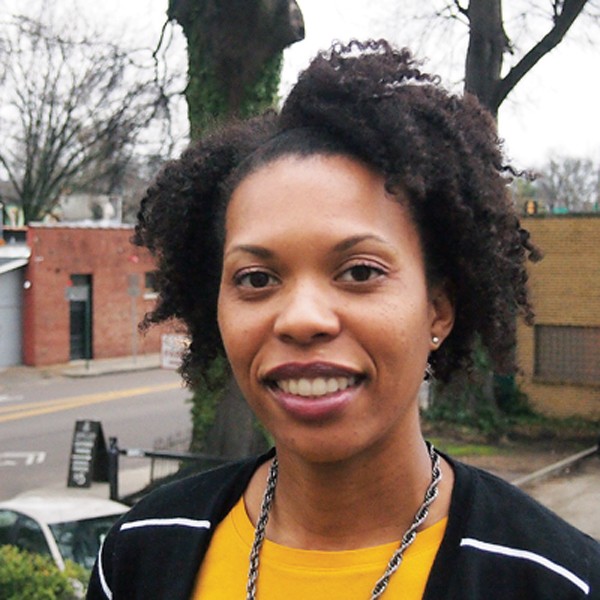 Justin Fox Burks
Justin Fox Burks
Tiffany Futch
Tiffany Futch
Instructional Designer at ServiceMaster
On the days Tiffany Futch tried busing from her Midtown home to her Bartlett office, she had “a two-mile walk and a two-hour bus excursion.” She quickly learned that busing to work would be “too much of a hassle.”
Lucky for Futch, her friends were happy to carpool.
“My friends really jumped in to make sure this was a success for me,” Futch says. “I could call or text someone at 6 a.m. and they would say, ‘Yeah, I’ll get you to work.'”
Biking was Futch’s transit option of choice for flexible weekend days, when she had the time to bike to Shelby Farms. And she relied on her own two feet whenever she could. But being a pedestrian didn’t come without some challenges
“The worst sidewalks I encountered on a regular basis are on Madison, right in front of the Center for Independent Living,” Furtch says. “Every time, I stub my toe or I trip.”
Shahin Samiei
Research Associate for the University of Memphis
 Justin Fox Burks
Justin Fox Burks
Shahin Samiei
Shahin Samiei already lives without a car in Memphis, but he signed up for the Car-Free Challenge anyway.
The Memphis Bus Riders Union secretary says he’s “pretty savvy” about the MATA bus system, and he has a direct bus line from his East Memphis home to his job in Midtown.
Samiei said the challenge gave him the chance to reflect on his years of riding the bus and to think about how some routes he used to frequent no longer exist thanks to budget cuts that have forced MATA to trim service.
“MATA can not do a better job than it does without the proper funding,” Samiei says. “They have been facing year after year of budget cuts from all three levels — city, state, and federal. Without those dollars, they simply can’t serve the people of Memphis.”
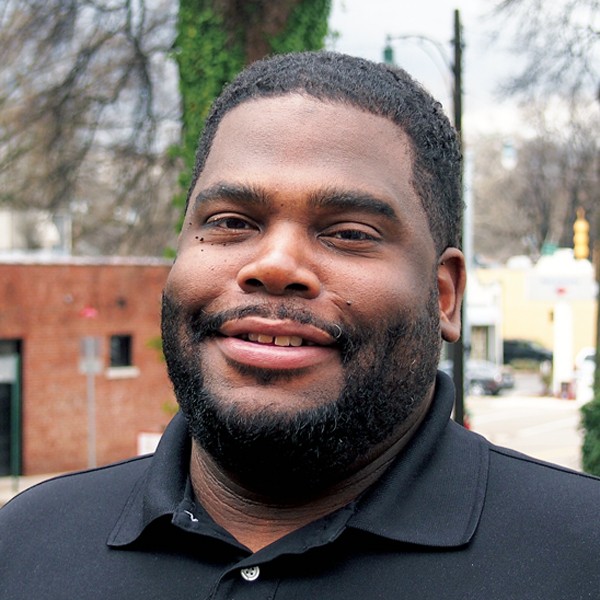 Justin Fox Burks
Justin Fox Burks
Darrell Cobbins
Darrell Cobbins
President/CEO of Universal Commercial Real Estate
Darrell Cobbins lives about a mile away from the Midtown real estate business he owns, so biking seemed the most viable option for commuting to work during the Challenge. But there was just one problem.
“I haven’t ridden a bike since I was 13 or 14 years old. I’m 41 now,” Cobbins says.
But Cobbins dusted off his cycling skills and put foot to pedal for the month of April. He quickly learned from cyclist friends that he needed to wear a helmet, something people just didn’t do when he was kid. And he said his former football coach’s wisdom helped him play it safe on city streets.
“My coaches always said, ‘Keep your head on a swivel, so you don’t get knocked out.’ I find myself just continuously looking around at every angle [while cycling],” says Cobbins, who thinks drivers could use more education on how to share the road with cyclists.
Cobbins says he appreciated the extra workout he got by biking, and he’s beginning to see the city through fresh eyes.
“When you’re in a vehicle, you don’t really take in your immediate surroundings,” he says. “But [cycling] makes you more aware of things that you didn’t realize were right there in walking distance of your house.”
Patrick Jones
Legal Assistant at Miles Mason Family Law Group
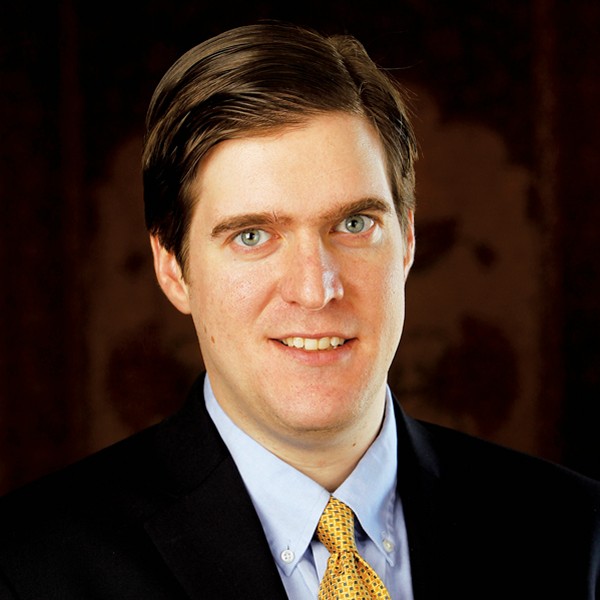
Patrick Jones
Patrick Jones’ first trip on a bus ended when the bus broke down. It did not deter Jones, however, who continued to ride the bus (and his bicycle) throughout April. His subsequent bus experiences weren’t nearly as dramatic.
“I took the bus down Poplar to Clark Tower, and the bus was actually going so fast that he had to pull over and stop for three minutes because they were ahead of schedule,” he said.
On one commute, he had an issue finding the bus stop.
“I looked down the street and there was a bus stop across the street with a shed and a bench,” he said. “But that wasn’t the direction I wanted to go. I looked to the right and didn’t see any green signs or poles. I realized that all the green signs look the other way. Every time I saw a sign on a pole, I had to turn around and see it’s a ‘No Parking’ sign [instead of a bus stop].”
Bicycle events
* On May 16th, the Downtown Memphis Commission will host its fifth annual Bike To Work Day, when downtown workers are encouraged to commute by bicycle. The three companies with the most participants will win a trophy at the lunch-time Bike Expo in Court Square. The Expo, featuring food trucks and live music, begins at 11:30 a.m. To register, go to www.biketoworkmemphis.com.
* On May 17th, the annual Bikesploitation festival kicks off at the National Ornamental Metal Museum. The day-long event will feature a bike parade and slow-ride jam, a bicycle painting garden, a mobile music machine (a 15-foot bicycle carrying live musicians), mini-bike races, film screenings, a group bike ride, and more. For a full schedule, go to www.bikesploitation.com.
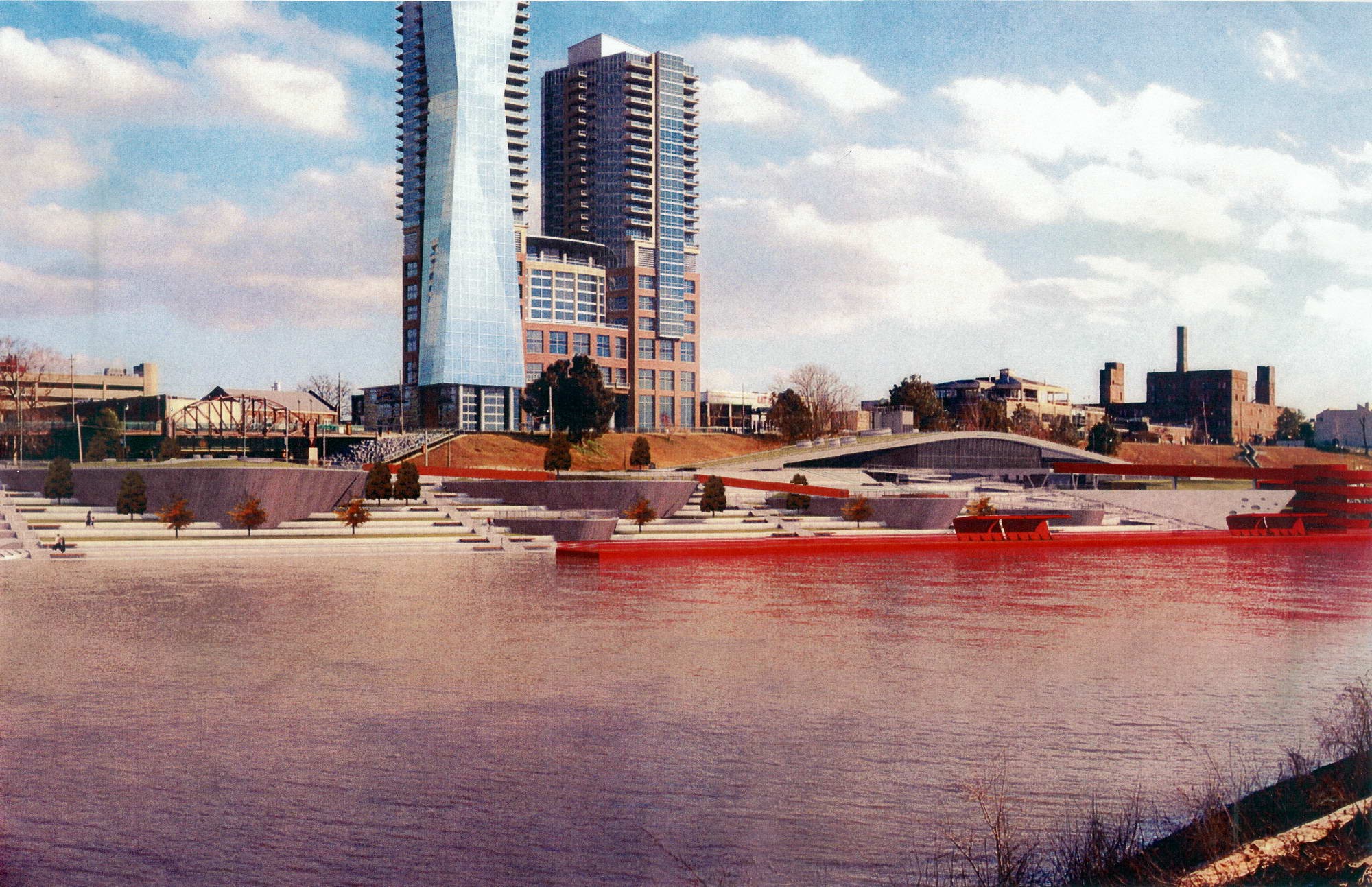

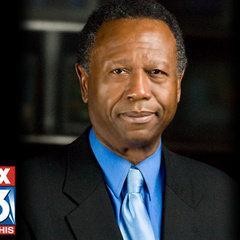

 Justin Fox Burks
Justin Fox Burks  Justin Fox Burks
Justin Fox Burks  Justin Fox Burks
Justin Fox Burks  Justin Fox Burks
Justin Fox Burks  Justin Fox Burks
Justin Fox Burks  Justin Fox Burks
Justin Fox Burks  Justin Fox Burks
Justin Fox Burks 
